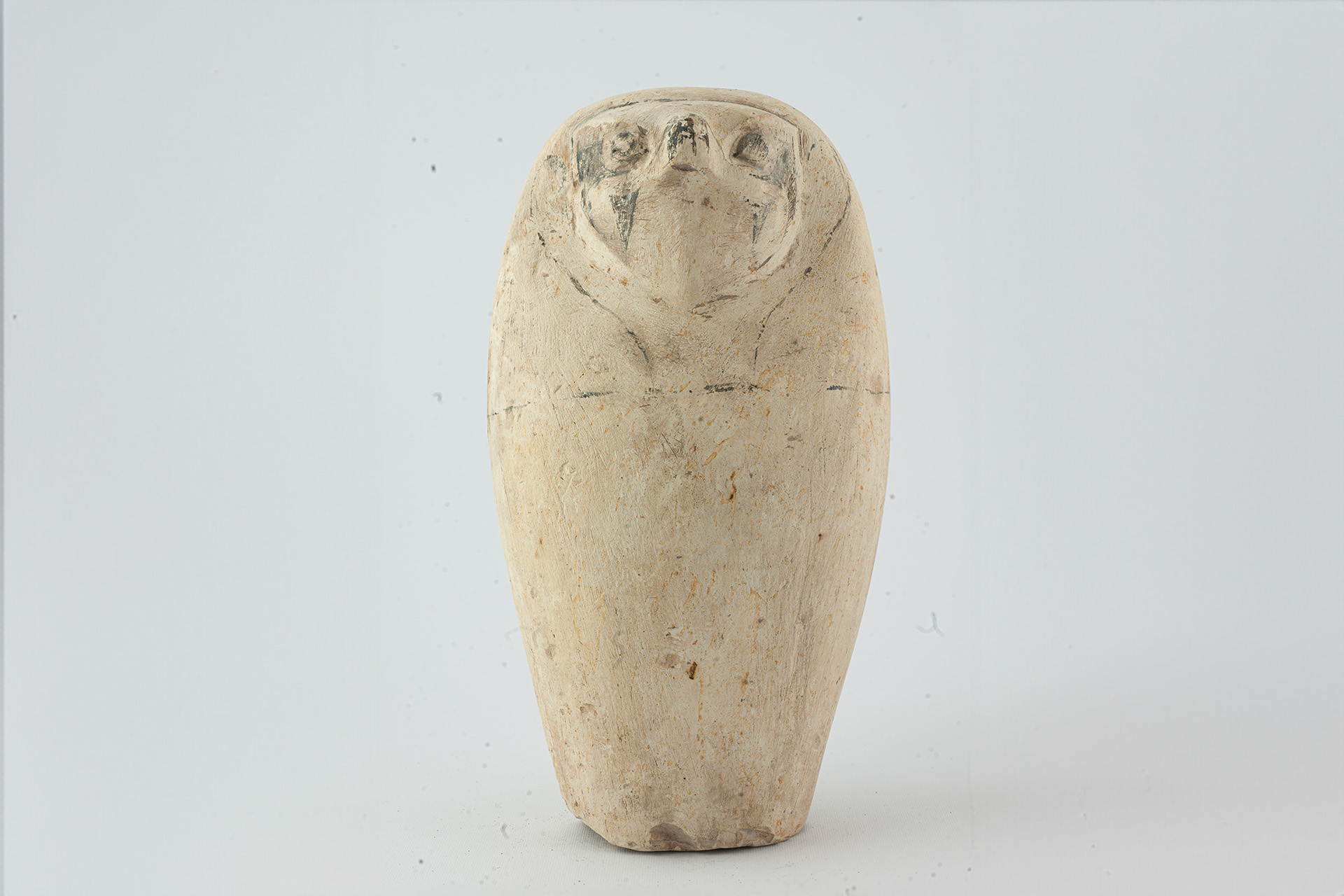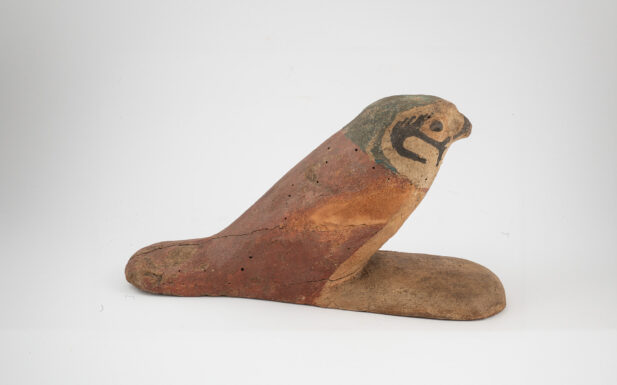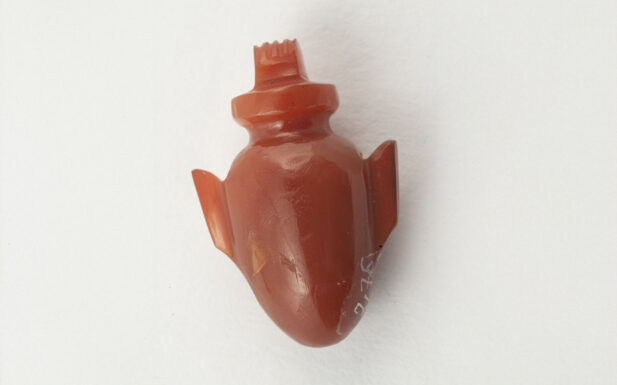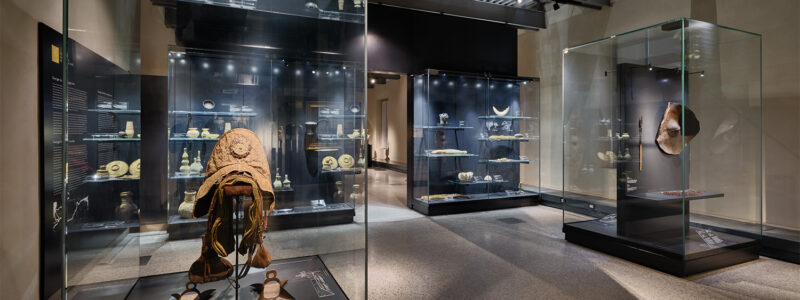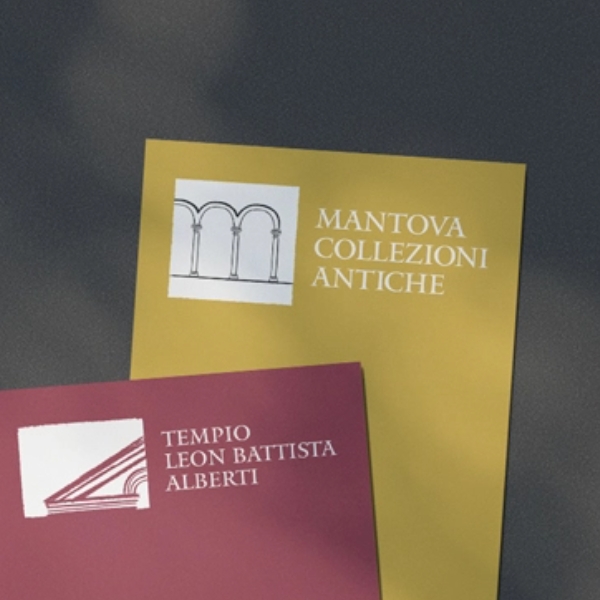At the beginning of the 1st millennium BC, the Egyptians experimented with new embalming techniques. Liver, stomach, intestines and lungs continued to be extracted from the body to facilitate their preservation, but once processed, they could be placed back inside the abdominal cavity. A practice that remained in use until the 25th Dynasty (ca. 746-655 BC). The canopic jars, thus, temporarily lost their function as containers for the mummified organs, now being returned to the body, but not losing their importance for the funeral dowry, and were replaced by so-called pseudo-canopic jars. Unlike actual canopic jars, the latter were carved from a single block of stone and not hollowed out, such as the falcon-headed pseudo-canopic jar in the Acerbi collection. The body of the vase must have borne an inscription in black ink, now evanescent, containing the name of the deceased and of Khebehsenuf, the falcon-headed son of Horo.
Third Intermediate Period, 22nd Dynasty (ca. 946-736 BC)
limestone with traces of black

